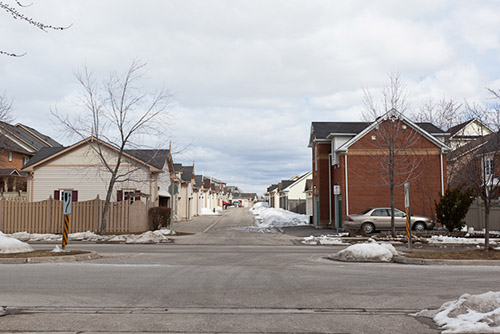Having trouble understanding camera lenses? What do all those numbers mean? In this video, I talk about focal length, and how it relates to field of view and perspective.

Spread the joy! Share today’s tweetable!
Are you ready for Part II of this mini-series on understanding your camera lenses?
Video Transcript
I’ve been getting a lot of questions about lenses lately. What makes one camera lens different from another? What do all the numbers mean? A 24-105 f/4 — what’s that? Hi, I’m Julie from Ultimate Photo Tips, and to answer all these questions, I thought I’d do a little mini-series about lenses. And for today’s tip, I’m going to concentrate on the focal length of the lens.
Understanding Camera Lenses: Focal Length & Field of View
That’s the first number you usually hear when a lens is being described. When I say a 24-105mm lens, or a 100mm lens, the number is referring to the focal length of the lens. It’s specified in millimeters. That number is telling you about the field of view, or the angle of view, that the lens has. Is it a wide-angle lens (anything up to about 35mm), a "normal" lens (35-70mm), or a telephoto lens (80mm on up to 300mm or more)?
Let’s look at some examples of how the focal length of the lens is related to field of view. In these examples, I am standing in the exact same place, and just changing the focal length of the lens used in each shot. You will see that the focal length affects how much the subject is magnified.

© Julie Waterhouse
focal length = 300mm
Here (above), I’m zoomed right in to 300mm, so my subject is quite magnified.

© Julie Waterhouse
focal length = 70mm
This one (above) was taken at 70mm. You see a little more of the surroundings.

© Julie Waterhouse
focal length = 35mm
Here (above),I’ve zoomed out a bit more to 35mm. Remember, I’m not moving my feet here, just changing focal lengths.

© Julie Waterhouse
focal length = 16mm
Finally, here’s a really wide angle shot at taken 16mm.
Understanding Camera Lenses: Zoom Lenses
A zoom lens allows you to vary your focal length within a given range. For the images you just saw, I used a lens with a focal range from 16 to 35mm, and another lens with a range from 70-300mm, and I took the shots at the extremes of each one. A fixed focal lens, also called a prime lens, has a single focal length that does not change.
Understanding Camera Lenses: Focal Length & Perspective
Now, just because you may have a zoom lens, doesn’t mean you don’t have to move your feet! Because I stood in the same place for those example images you just saw, my perspective didn’t change. However, if I move my camera position for each image so that I fill the frame with the same subject each time, then I do change my perspective. In that case, and in the examples I’ll show you next, you’ll see how a wide angle lens really exaggerates depth, whereas a telephoto lens compresses distance. Let’s take a look.

© Julie Waterhouse
focal length = 300mm
Let’s start again with a shot (above) taken with a focal length of 300mm. Notice the two signs, one at each edge of the frame. For all of my shots, I’ll keep the signs at the left and right so that the same subject matter fills the frame each time. Also take note of the relative size of the white truck and the stop sign. To get this shot, I’m standing way down the street, far away from the stop sign.

© Julie Waterhouse
focal length = 70mm
Here (above), I am zoomed out a bit at 70mm.

© Julie Waterhouse
focal length = 35mm
Now, I’m at 35mm. For each of these shots, I had to walk further down the street, getting closer and closer to the signs.

© Julie Waterhouse
focal length = 16mm
This (above) was taken at a focal length of 16mm. By the time I took this shot, I was standing almost in between the signs. Notice how the distance is much more exaggerated here. The perspective has changed in each shot, and the impression of depth is increased as the angle of view gets wider. That’s because the relative sizes of the objects within the frame change. The truck is now tiny, compared to the stop sign. That gives the feeling of depth.
Okay! I think that’s enough for today. I hope that helped you in understanding camera lenses. Next time, I’ll talk about other aspects of lenses like their maximum aperture, and glass quality.
In the meantime, come on over and visit me at ultimate-photo-tips.com for more great photography tips, and make sure to sign up for my mailing list while you’re there. That’s where I share ideas and inspiration that I don’t share anywhere else.
Happy shooting, and I’ll see you next time for Part 2 of “Understanding Camera Lenses!”